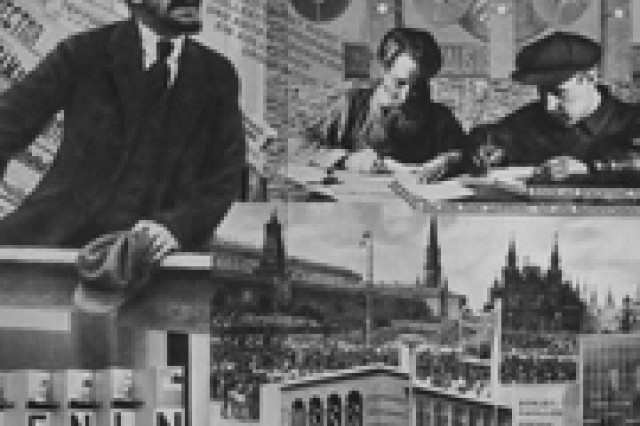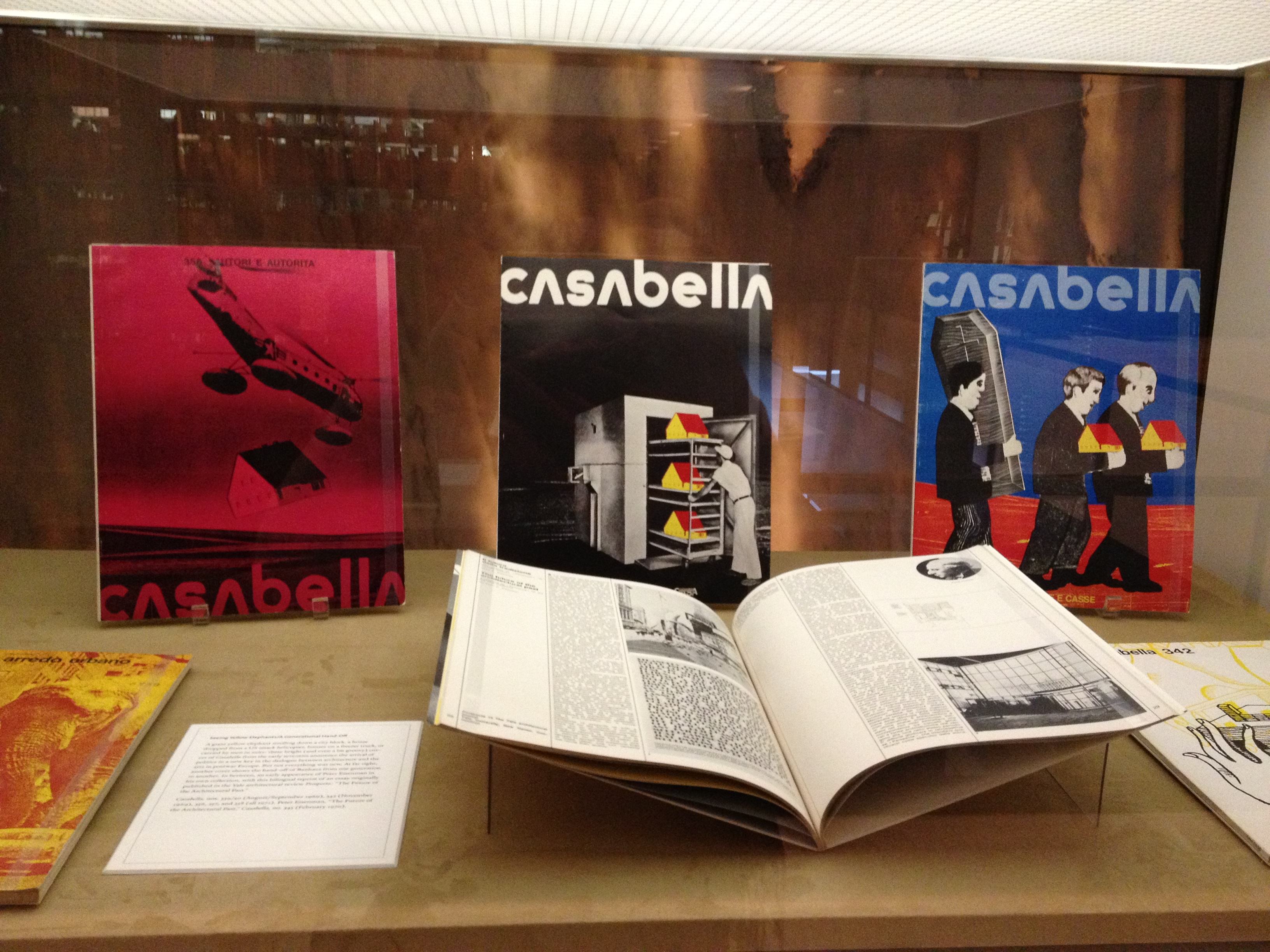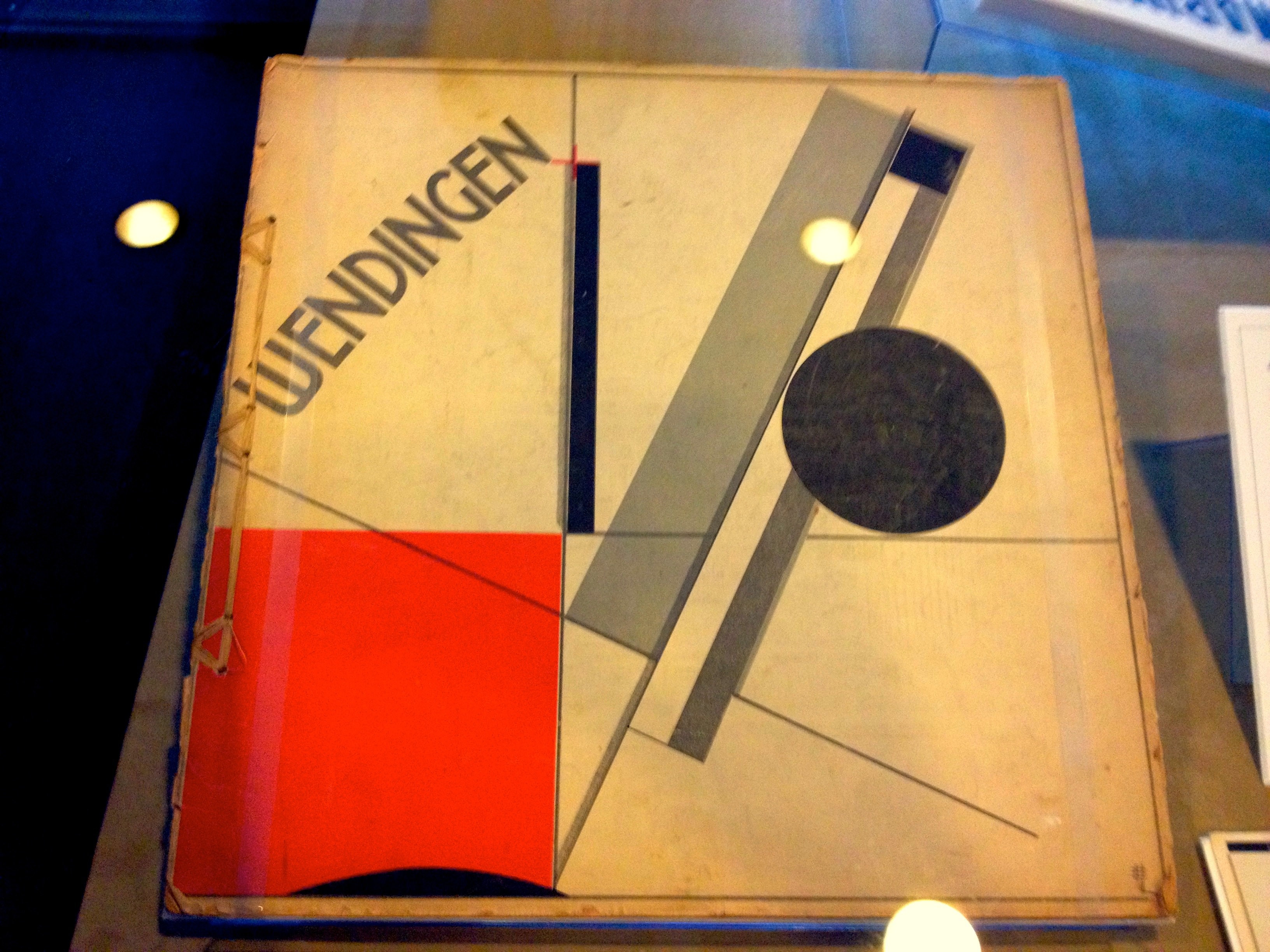“Dialogue is the very core of the Eisenman Collection. Architecture in dialogue: with the fine arts and graphic design; with history, philosophy, political ideology and social agendas. Dialogue across disciplines and languages, media, formats, and genres.” – Kevin Repp, Curator
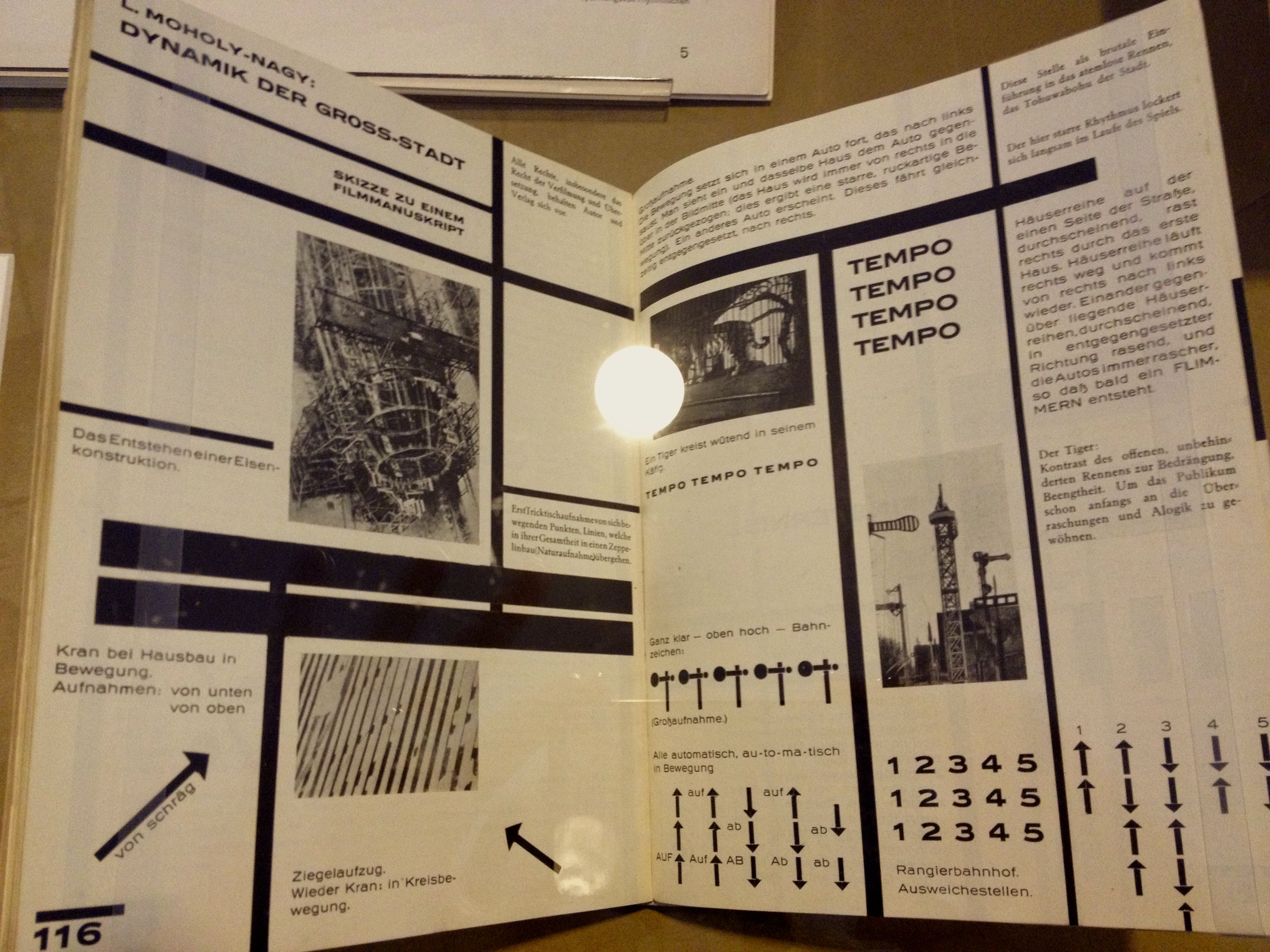
Moholy-Nagy’s “Dynamics of a Big City: Sketch for a Film Script” - talk about cross-pollination!
October 8th marked the opening of Beinecke’s latest exhibit, featuring the Peter Eisenman Collection of Modernism in Architecture, Graphic Design and the Fine Arts. Internationally renowned architect and Charles Gwathmey Professor of Practice at Yale School of Architecture, Eisenman has assembled an electric collection of thousands of books, periodicals, posters, and ephemera from Europe’s interwar avant-garde in almost 10 languages (French, Italian, Dutch, German, Czech, Hungarian, Russian…) with some copies having passed through the hands of this period’s most eminent figureheads, like Le Corbusier and Theo van Doesburg.
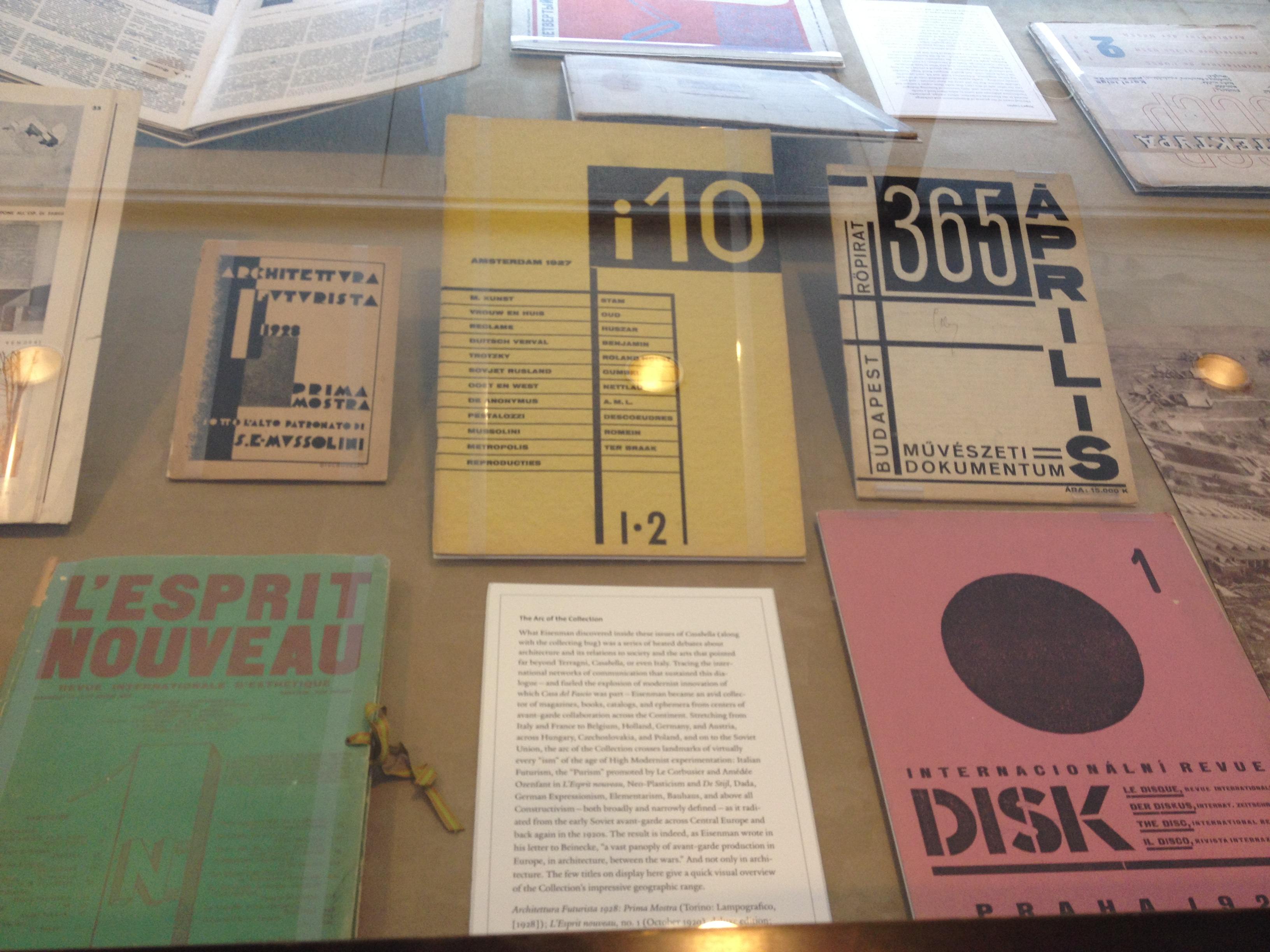
Bold colors and even bolder typefaces: a sampling of periodicals from France, Italy, Holland, Hungary
With almost 200 items on display here through December, the Eisenman collection ecstatically tells the story of a changing and dynamic visual language, born out of a broken Europe seeking to rebuild itself after the devastation of World War One. While architecture provides the point of entry, this collection is really about entirely novel modes of social, cultural, and political expression in a fascinating modernist moment.
The exhibit begins, naturally enough, with the birth of his collection. As a graduate student touring Europe, Eisenman searched high and low–like a “dog to a hydrant”– for mentions of Giuseppe Terragni’s Casa del Fascio and that time in Italian architectural history (1933-36). He quickly realized how much he could learn about Terragni–a fascist architect–and the architecture of the period through design periodicals, like Casabella, and so widened his search for any journal published before the war. Inside these pages raged a Europe-wide conversation about and between the avant-garde that would forever change his relationship to architecture: “These magazines are as much of who I am, and how I define myself, as any essay I have written or building I have designed.” As Eisenman himself describes it, the collection represents a certain “attitude toward to the printed word,” which Beinecke is uniquely suited to showcase. (Eisenman Letter to Director)
Curator Kevin Repp has organized the exhibit loosely chronologically, though the focus throughout is on the deeply forged networks of transnational communication and conversation. At stake, of course, was the reconstruction of Europe and determining what role the arts and architecture would play in its new image. It was this dialogue that spurred unprecedented leaps in avant-garde production. The collaboration between Paris, Amsterdam, the Bauhaus, and Soviet Constructivists not only allowed for blended styles and -isms, but bespoke a general hopefulness. Several pieces show postmarks and addresses–an El Lissitzky futurist poster moves west, an Italian newspaper arrives in Paris for a Dutchman–signaling their physical movement through the mail and through these networks. Bauhaus professor and photographer/graphic designer Laszlo Moholy-Nagy, in a typed letter to these magazines calling for continued support for the Bauhaus, points to the essential power of the transnational creative mode: “Art is a direct emanation of society in movement, more and more it evades regionalist milieus to assume an attitude that is not just international, but universal: ideas cross frontiers with the rapidity of the vehicles that transport them.” (Typed Bauhaus letter)
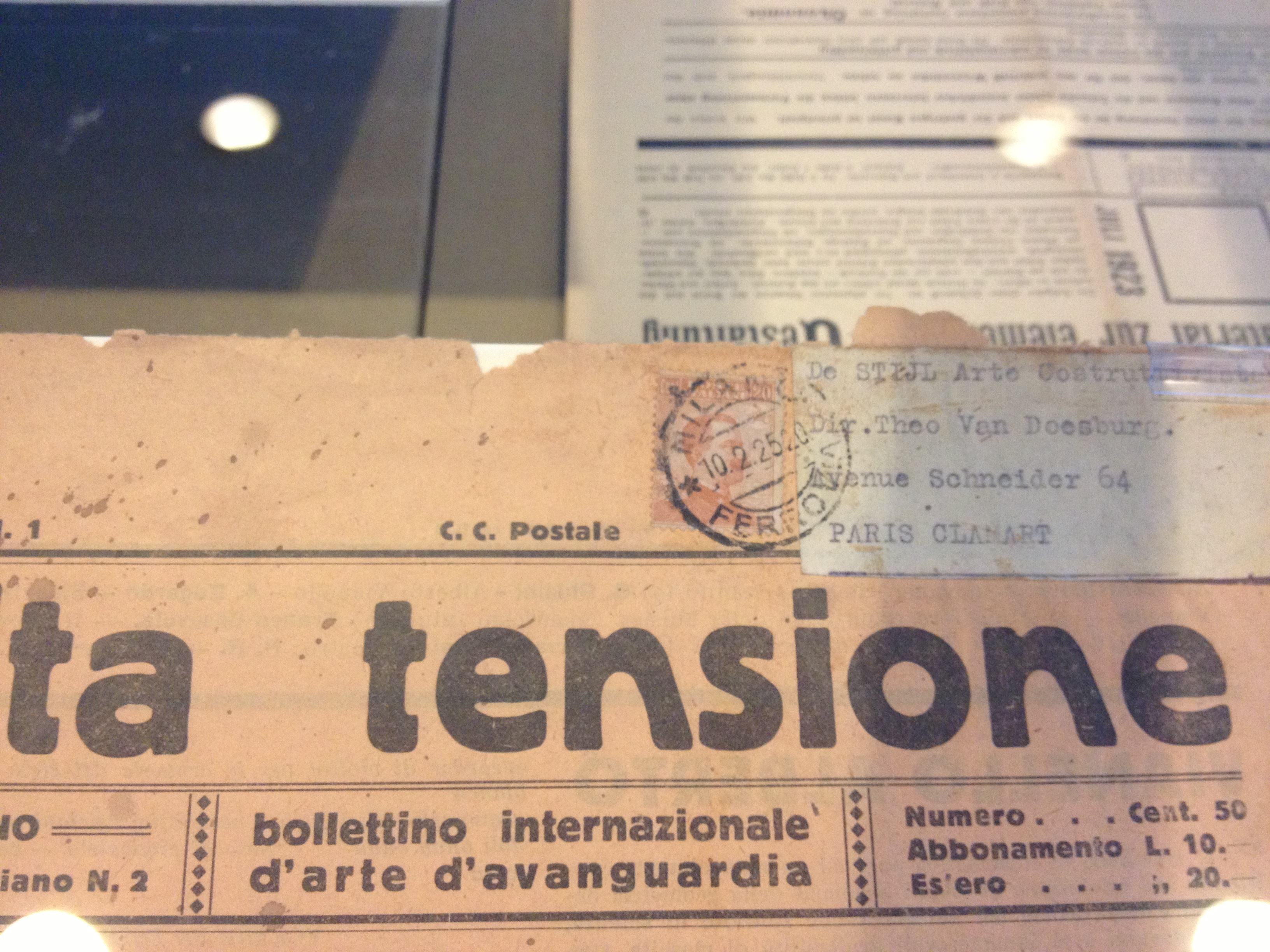
Alta Tensione, periodical from Milan, bearing postmark to Theo van Doesburg in Paris
A natural outgrowth of such lively exchange was a parallel mélange of graphic styles. In periodicals architecture lends itself to varied interpretation as it finds form on paper. The exhibit illustrates strikingly “architecture’s floating position in the rough-and-tumble interplay of modernists on the field of cultural production between the wars.” (Repp) In other words, the centuries-old stark, academic divisions between mediums—painting, printing, photography, architecture, film—swiftly faded.
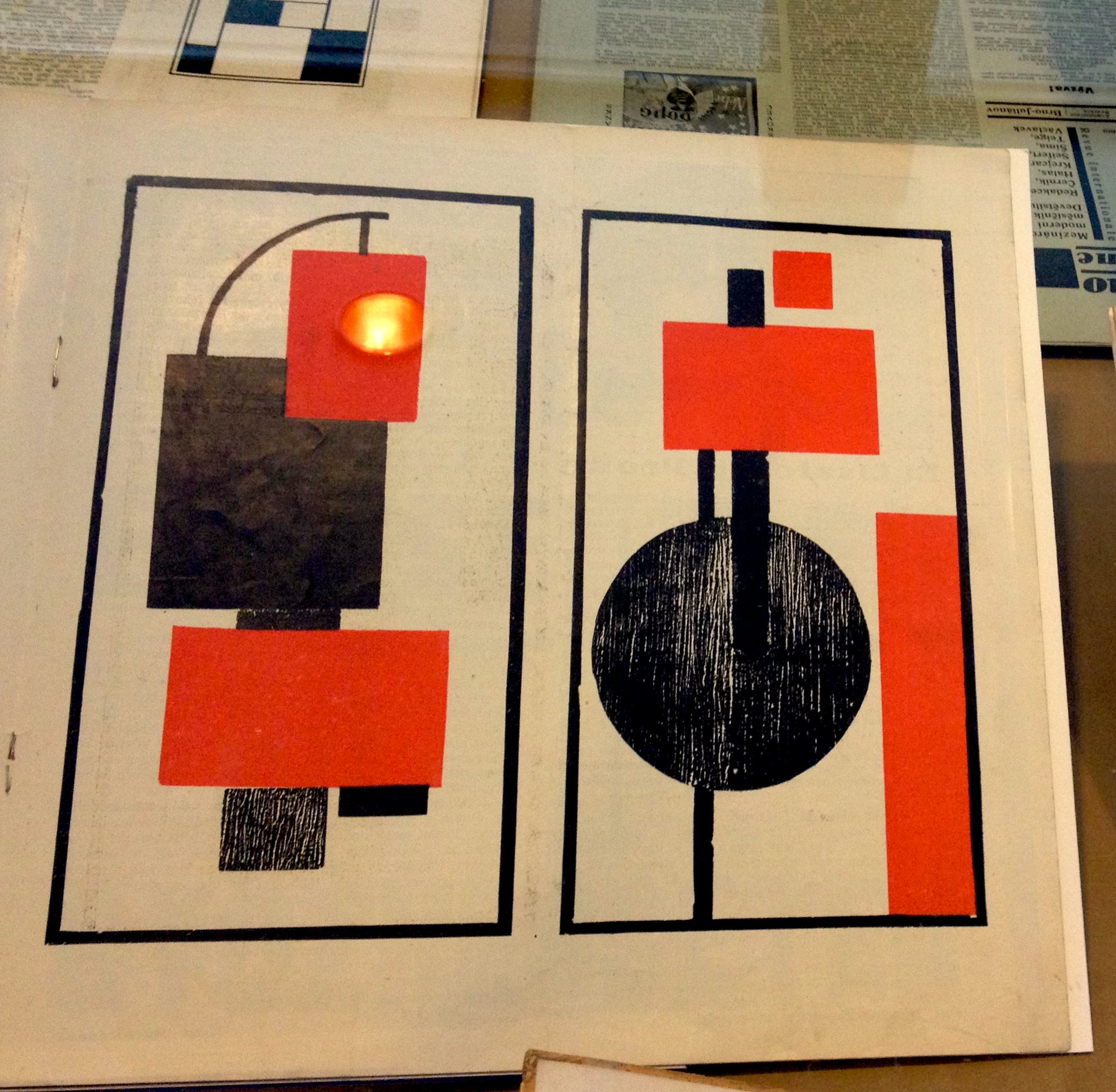
Lajos Kassak’s “Picture-Architecture” in MA
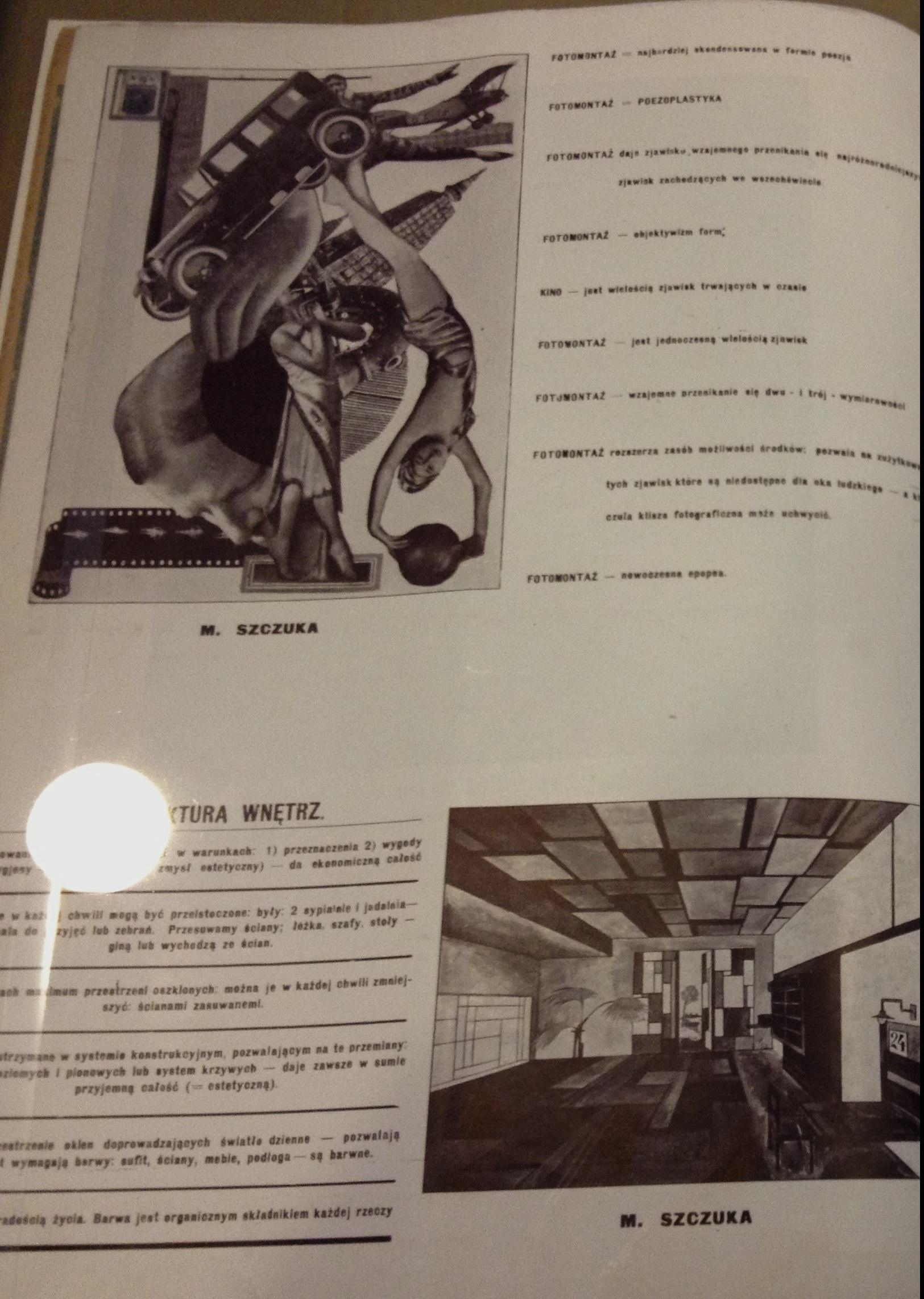
Polish revue “Blok” features the photo-montage-architecture of Mieczyslaw Szczuka
What’s more, artists played upon journalistic information and artistic expression in the periodical format. No longer did the responsibility for meaning fall on words alone; visual groundlessness was as central to the message as the message itself. Such innovations in “typefaces, spatial relations, color, line, and vector” made for an ambitious campaign to rethink perception, in posters, pamphlets, manifestos, exhibition catalogs as well as periodicals and books. Bauhaus, for example, launched an enormously wide-reaching publicity campaign with fascinating results.
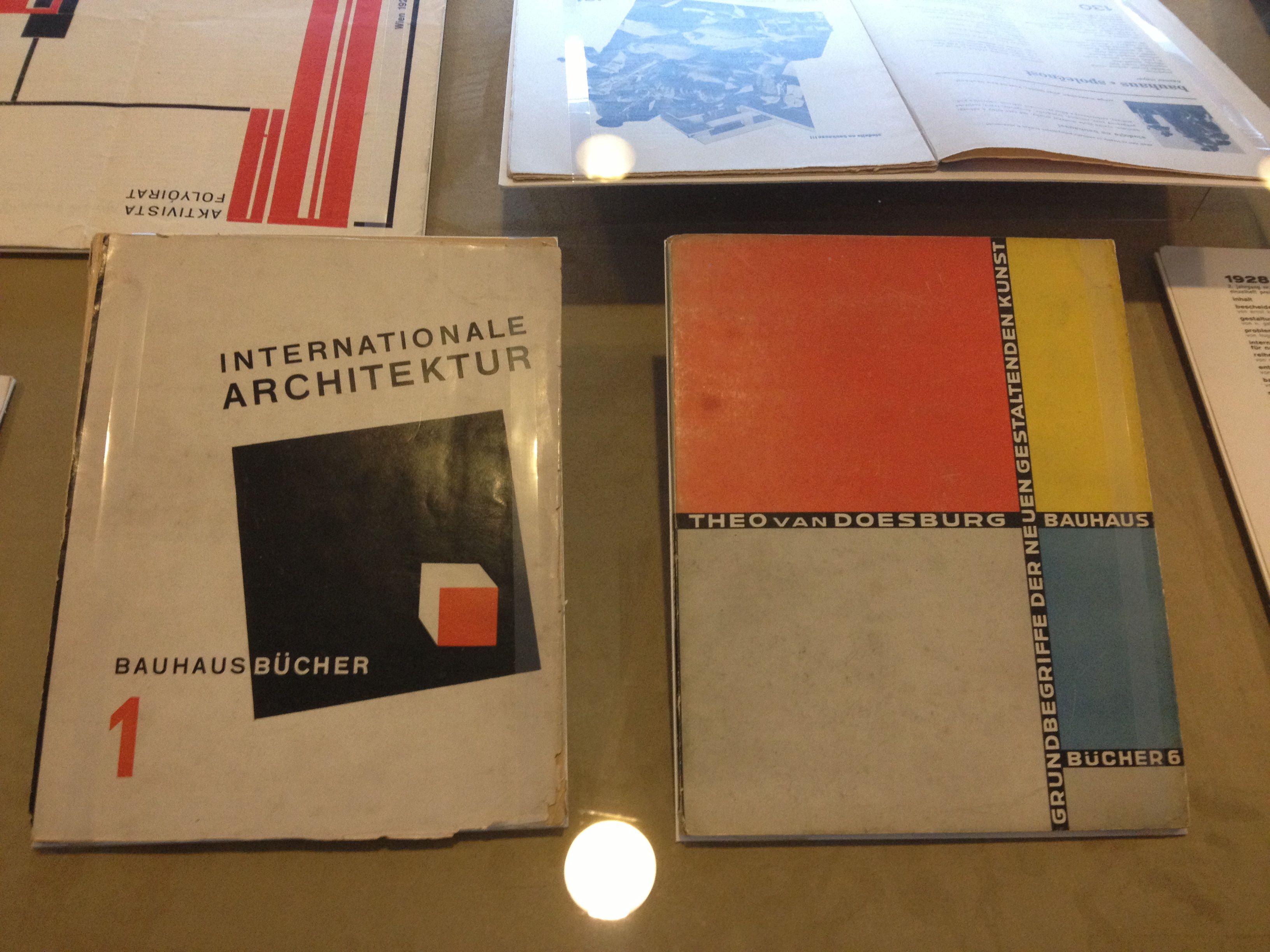
Two issues of Bauhausbücher - new revue for media blitz
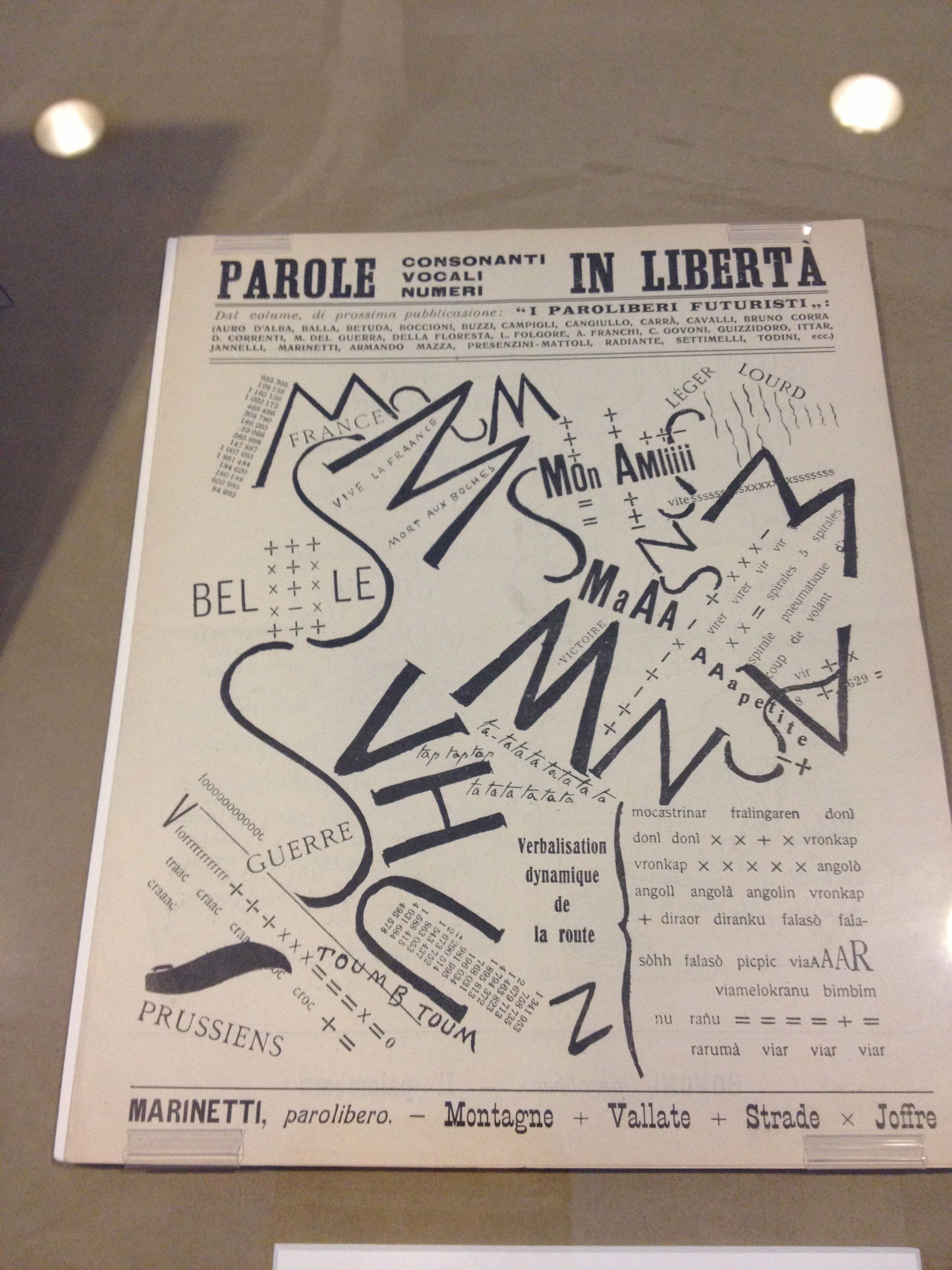
“Parole in Liberta” or “Words set free,” a Futurist pamphlet
An important current running through this exhibit is the avant-garde’s concurrent participation in political extremism. Between Soviet Russia and Fascist Italy, such artistic and ideological output in the media was no idle dalliance. For example, in the early years of Lenin’s Revolution, Soviet constructivist innovation boomed, neatly and powerfully embodying communist ideas. As Stalin’s star rose, and with it Socialist Realism, such bold experimentation became less prevalent. Mussolini and the fasciscts likewise made use of avant-gardist expression for political leverage. See my previous post for more on that. In light of the future devastation of World War Two, one cannot help but ponder the political repercussions of building the world anew.

“Duce” - nickname for Mussolini in striking layout with photomontage, advertising the monumental “Exhibit for the Fascist Revolution”

Stalin appearing in “URSS en construction”
More than anything, the Eisenman collection begs to be looked at. Just imagine the sets of eyes that passed over these issues, from Brussels to Vitebsk, architects of a new world. What may seem old-hat by now—the black square, photomontage, Dada—held within it all the promise of novelty and liberty. Avant-garde visual experimentation is meant to be playful, to get a rise out of the viewer; and there is certainly no shortage of fun to be had here.
